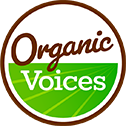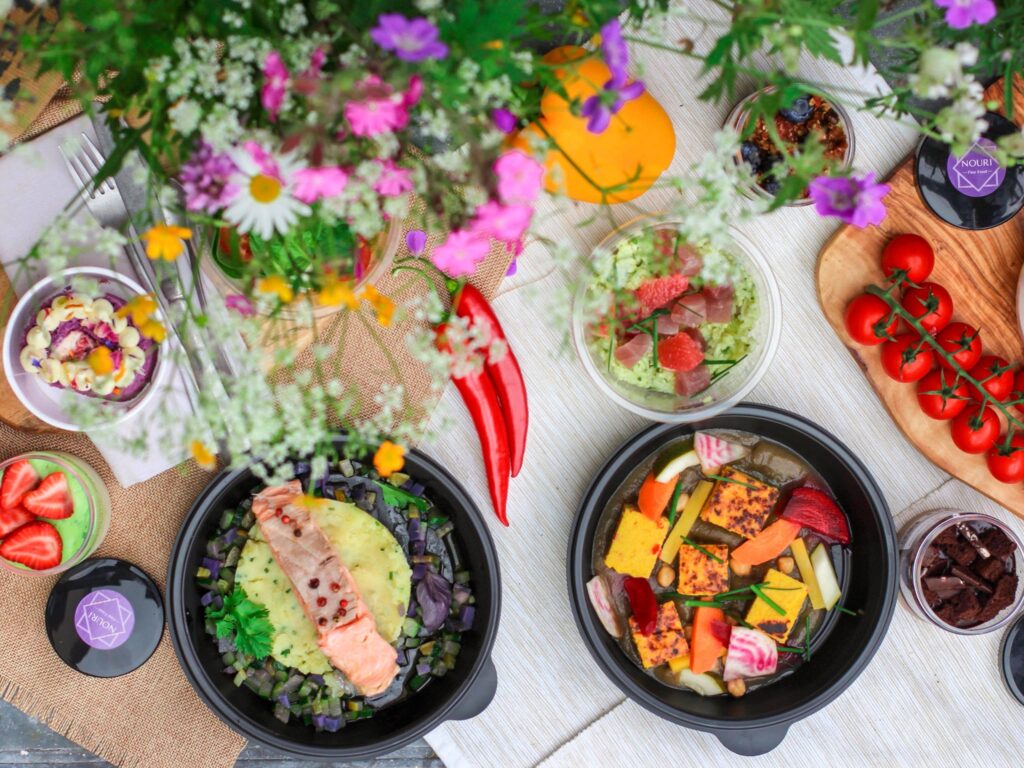Eating the organic rainbow is a way of getting a balanced diet based on colors. Embracing a vibrant and varied diet that encompasses a rainbow of colorful fruits and vegetables is not only a feast for the eyes but also a powerful pathway to optimal health.
The findings are that foods of a similar color tend to have similar nutrients. Some of the nutritional components cannot be found in supplement form, so we recommend getting these important nutrients from whole foods that are organically produced.
Let’s delve into the significance of this colorful approach to eating, uncovering the extraordinary range of advantages it brings to our overall well-being.
According to a report about phytonutrients, eight out of 10 people in the U.S. are falling short in virtually every color category of phytonutrients.
Based on the report, a high percentage of Americans fall short in consuming certain phytonutrients:
- green – 69%.
- red – 78%.
- white – 86%.
- purple and blue – 88%.
- yellow and orange – 79%.
In addition to supplying phytonutrients, consumption of colorful fruits and vegetables offers protective effects for heart health.
It’s also important to choose organic for these foods – it contains more vitamins, minerals, enzymes and micronutrients than conventionally raised food does. A growing body of evidence shows how farming methods can influence the nutritional content of foods.
Here are just a few highlights:
- A six-year study found more antioxidant activity and higher flavonol content in organic onions compared to conventional.
- Meta-analysis published in 2016 in the British Journal of Nutrition found that organic dairy and meat contain about 50% more omega-3 fatty acids. This increase is the result of animals foraging on grasses rich in omega-3s, which then end up in dairy and meats.
- An 18-month milk study in 2013 found that organic production enhances milk’s nutritional quality by shifting fatty acid composition.
- A meta-analysis published in 2014, in the British Journal of Nutrition, found that organic crops had significantly higher antioxidants than conventional crops, including 19% higher levels of phenolic acids, 69% higher levels of flavanones, 28% higher levels of stilbenes, 26% higher levels of flavones, 50% higher levels of flavonols, and 51% higher levels of anthocyanins.
There are also many issues when it comes to conventional foods. Thousands of chemicals can be added to conventional packaged foods, including artificial preservatives, flavors, and colors linked to health problems. Learn more about these differences between organic and conventional foods from the Environmental Working Group.
One of the issues with the synthetic additives found in processed conventional foods is that they are targeted at children and parents. These chemically addictive additives lead to many health problems. The true price of this “cheap” food is Americans’ health. From diabetes to obesity to ADHD, food-related disease is at an all-time high. Or, as the New York Times put it, “Our Food Is Killing Us.”
A study in JAMA Internal Medicine found that those who ate organic foods frequently lowered their overall risk of developing cancer – those who primarily eat organic foods were more likely to ward off non-Hodgkin lymphoma and postmenopausal breast cancer compared to those who rarely or never ate organic foods.
There really are thousands of reasons to choose certified organic, but we’ve narrowed it down to 15 here.
Red
According to one study, red foods contain an important nutrient called lycopene, which protects against disease and contributes to eye and heart health. Your skin benefits from eating red foods, too. The polyphenols and antioxidants in red fruits and veggies help prevent skin cancer and offer skin protection against damaging effects from sunlight, excessive inflammation, and wounds.
Many of these red foods are on the Environmental Working Group’s Dirty Dozen™ list. Each year, a rotating list of produce is tested by USDA staffers for 251 different pesticides. A total of 210 pesticides were found on the 12 crops with the most pesticide residues. Strawberries have topped the list for several years.
So it’s important to only consume organic red foods, especially strawberries and other berries.
Organic red foods we recommend are strawberries, apples, raspberries, red peppers, grapes, kidney beans, cherries, rhubarb, tomatoes, radishes, beets, cranberries, pomegranates, and watermelon.
Yellow and Orange
Yellow and orange produce are rich in Vitamin C and carotenoids. For example, citrus fruits contain a unique phytonutrient called hesperidin, which helps to increase blood flow.
Even more importantly, consuming citrus may also reduce your risk of stroke. Among the array of carotenoids found in orange and yellow foods, lutein and zeaxanthin stand out. These fat-soluble antioxidants have been the focus of extensive research, due to their remarkable capacity to safeguard the well-being of the eyes. Remarkably, they accumulate in the retinal tissues, playing a pivotal role in thwarting cataracts and age-related macular degeneration, the primary cause of blindness worldwide.
These carotenoids act as a shield against the detrimental effects of blue light emanating from screens on phones, computers, and televisions.
Organic orange foods we recommend are oranges, carrots, sweet potatoes, papayas, mangoes, grapefruits, winter squash, cantaloupe, orange bell peppers, persimmons, and peaches.
Organic yellow foods we recommend are bananas, corn, golden beets, pineapple, corn, yellow summer squash, and lemons.
Purple and Blue
Extensive research has highlighted the health benefits of blue and purple fruits and vegetables, primarily due to their abundance of anthocyanins and resveratrol, which possess remarkable anticancer and antiaging properties.
Berries stand out for their bioactive phytochemicals, which play a crucial role in repairing damage caused by oxidative stress and inflammation.
The anthocyanins in blueberries and red grapes have been associated with a reduced risk of heart disease, cognitive decline, and Type 2 diabetes. These compounds also support healthy weight maintenance and aid in maintaining a normal inflammatory response in the body.
Red grapes offer an additional advantage with their rich content of polyphenol compounds and antioxidants. Notably, resveratrol found in red grapes has been linked to increased nitric oxide production, contributing to better heart health outcomes.
Red cabbage, which is more purple than red, is a true superfood bargain, boasting the highest level of antioxidants per dollar of the range of nutrient-packed foods. Incorporating these blue- and purple-hued fruits and vegetables into our diets can boost our overall health and well-being.
Organic purple foods we recommend are blueberries, red grapes, purple grapes, prunes, plums, blackberries, eggplant, purple potatoes, purple cauliflower, purple cabbage, figs, and raisins.
Green
Green fruits and vegetables, which supply a plethora of essential nutrients, are some of the healthiest foods we can incorporate into our diets. They are particularly rich in lutein, isothiocyanates, isoflavones, and vitamin K, all of which play crucial roles in promoting blood and bone health.
Folate, an important nutrient, is abundant in green vegetables. It’s especially important for pregnant women to consume since it helps prevent congenital disabilities.
Furthermore, certain green vegetables offer specific health benefits. Cruciferous vegetables like broccoli and cabbage have been proven to enhance immune function. Dark leafy greens like kale have been associated with potential mood improvement.
Research shows consuming leafy greens can slow cognitive decline. In a study of 960 participants ages 58 to 99 years, those who consumed at least 1.3 servings of leafy greens per day for almost five years experienced cognitive improvement comparable to being 11 years younger, compared to those consuming fewer greens.
According to another study, the benefits don’t stop there; greens are also highly bioavailable sources of calcium and vitamin K1, which positively impact bone metabolism, contributing to overall bone health.
And let’s not forget the versatile kiwi fruit, which relieves various maladies, from the common cold to irritable bowel syndrome to insomnia. It has even shown potential in helping repair damage to DNA. With such a wide range of advantages, greens, and kiwi are excellent to include in our diet.
Organic green foods we recommend are asparagus, broccoli, kale, romaine lettuce, collard greens, brussel sprouts, green cabbage, green grapes, arugula, spinach, Swiss chard, green beans, peas, zucchini, kiwi fruit, avocado, green apples, and edamame.
White and brown
Despite lacking vibrant colors like some other foods, white and brown produce still offer excellent choices for maintaining a healthy diet.
Like broccoli, cauliflower is a cruciferous vegetable known for its abundance of the anticancer compound sulforaphane.
Within the allium family of vegetables, garlic, and onions stand out, with potent health-promoting compounds such as allicin and quercetin. Interestingly, aged garlic surpasses raw garlic in its anti-inflammatory, immune-boosting, and anti-allergic effects.
White button mushrooms house beneficial phytonutrients that inhibit aromatase activity and breast cancer cell proliferation. This common mushroom variety also possesses antimicrobial properties.
Organic white and brown foods we recommend are garlic, mushrooms, potatoes, parsnips, jicama, cauliflower, onions, and daikon radishes.
From bolstering our immune system and promoting heart health to enhancing brain function and reducing the risk of chronic diseases, the diverse array of nutrients present in colorful produce plays a crucial role in nourishing us from the inside out.
A great way to eat the rainbow is to make an organic smoothie or a salad. Use our organic smoothie recipe roundup here or our organic salad recipe roundup here to start your nutritional journey. With each color you add, remember to choose certified organic for optimal health and environmental benefits.









